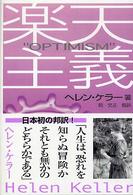Full Description
This book offers a comprehensive exploration of the multilingual linguistic landscape in Taoyuan City, Taiwan, focusing on the impact of new immigrants and the diverse range of languages they speak, across urban and peripheral areas. It examines the city's transition from a predominantly monolingual or bilingual Chinese-English signage environment to a vibrant multilingual one shaped by Chinese, English, Japanese, Korean and Southeast Asian languages. Employing ethnographic methods and geosemiotic analysis, the study investigates code preferences and writing types on public and private signage. Additionally, it delves into community perceptions of the multilingual linguistic landscape and its implications for language policy and planning, providing valuable insights into evolving linguistic dynamics. The authors move beyond theoretical exploration to deliver practical insights with implications for institutions, policymakers, researchers, educators, students and practitioners alike. Ultimately, this work aspires to enrich understanding not only of Taiwan's linguistic landscape but also of broader global discussions on multilingualism, language policy and language planning.
Contents
Figures, Tables and Images
Preface
PART 1: EXPLORING THE LINGUISTIC ECOLOGY
Chapter 1. Why Study Linguistic Landscapes in Taiwan?
Chapter 2. Understanding Taiwan: Sociohistorical and Sociolinguistic Overview
Chapter 3. Approaches to Understanding Taoyuan City's MLL
PART 2: READING THE LINGUISTIC LANDSCAPE
Chapter 4. Regulations and Implementations: A Geosemiotic Look at the MLL
Chapter 5. Exploring MLL in Diverse Spaces
Chapter 6. Code Preference and Multilingual Writing Types in the MLL
Chapter 7. Community Members' Perceptions of the MLL in Taoyuan City
Chapter 8. Bringing It All Together: What Does It All Mean?
References
Index
-

- 和書
- 楽天主義



